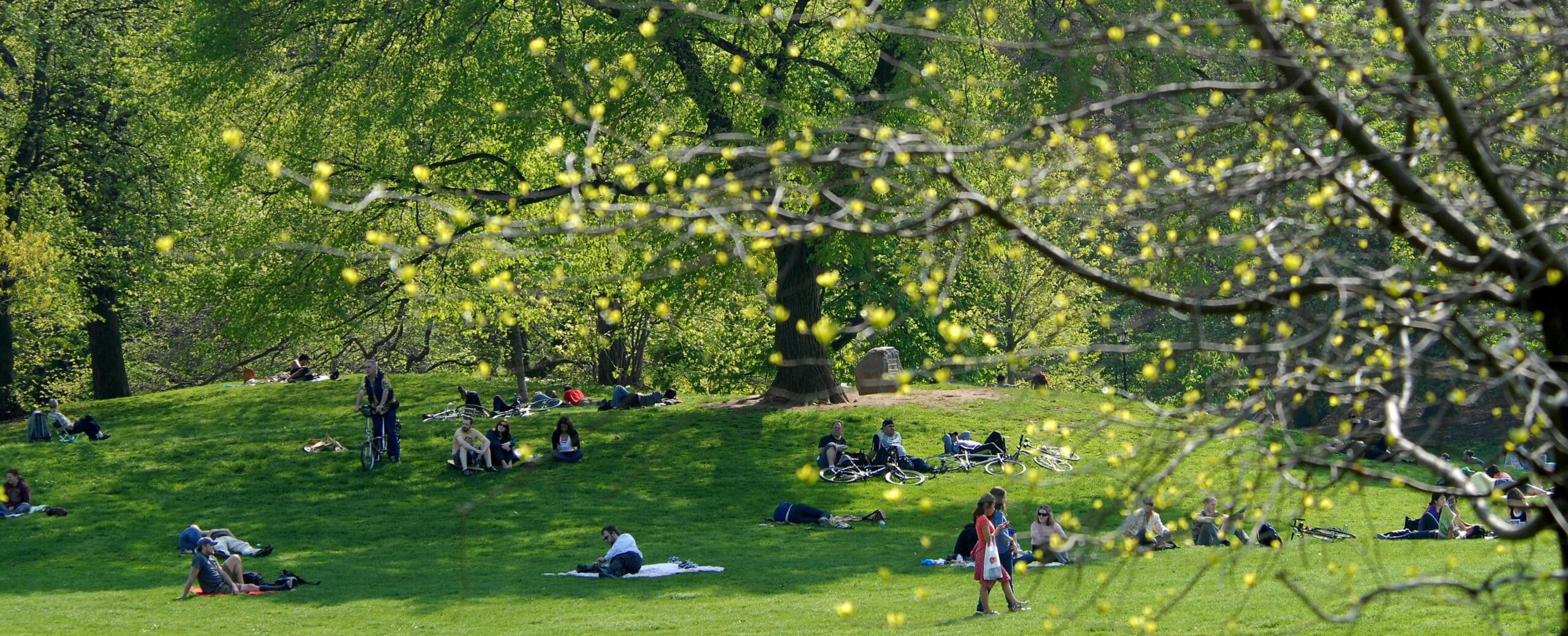In timing with Prospect Park’s 150th anniversary, Prospect Park Alliance—the non-profit organization that sustains the Park—announced the launch of its restoration plans for one of the Park’s hidden gems, a former Rose Garden in the Park’s northeast corner. The first phase of the process is to engage the public in the future vision for this landscape, including a June 1 open call for an immersive art installation, The Connective Project, conceived by AREA4 and Reddymade Architecture + Design, which invites the public to submit photos, artwork, prose or verse inspired by their love of the Park; and a June 10 community design workshop led by Hester Street Collaborative.
Submit your photos, artwork, prose or verse starting June 1 for the community art installation.
“Since its founding, Prospect Park Alliance has been focused on renewing the Park for the enjoyment of all of Brooklyn,” said Sue Donoghue, president of Prospect Park Alliance. “Through these innovative community engagement initiatives, we are looking to involve all of the diverse communities that consider the Park ‘Brooklyn’s Backyard’ in the future vision of this corner of the Park, one of the few remaining landscapes untouched by restoration.”
Rose Garden Restoration
Prospect Park Alliance is working with Hester Street Collaborative, a non-profit organization focused on improving the physical environment in underserved NYC neighborhoods (and currently working on the City’s cultural plan), to engage the community in the future vision for the Rose Garden—the first step in the Alliance’s plans to restore this landscape in the Park’s northeast corner. The Alliance is looking to gather input from a wide variety of communities that border the Park and use the Park regularly. Over the course of the summer and fall, the Alliance and Hester Street Collaborative will be reaching out to the community in a variety of settings to help determine the future design of this space. To kick off the community engagement process, Prospect Park Alliance and Hester Street Collaborative are hosting a Community Design Workshop on June 10. Learn more and RSVP.
The Connective Project
The Connective Project is an immersive art installation created from thousands of pinwheels to create an evolving, undulating wave of color and beauty that blankets the two-and-half acre Rose Garden from July 7-17, 2017. On June 1, the Alliance will launch an open call for submissions from the public to share artwork, photos, verse or prose that expresses their love of Prospect Park. All submissions will be featured on an online gallery, while select pieces will be printed and transformed into one of 7,000 pinwheels that will be showcased in the Park and constructed of weather-resistant biodegradable paper made from stone dust. Learn more and submit your pieces.
The designer Suchi Reddy of Reddymade Architecture + Design designed an installation that would engage the public in a dialogue about the importance of public space, but also generate wonder and play. Full of color and whimsy, The Connective Project is a nod to the creative spirit that pervades Brooklyn and Reddy’s practice. The engagement with the community began with an open call to emerging artists, curated by the Brooklyn Council of the Arts, the Brooklyn Museum, BRIC Arts & Media, PIONEER WORKS, MoCADA, and Russell Simmons’ Rush Philanthropic Arts Foundation.
The Connective Project is funded in part by Bloomberg Philanthropies, with additional support from NewYork-Presbyterian Brooklyn Methodist Hospital and Tesla, Inc.
About the Rose Garden
Originally the “Children’s Playground,” the Rose Garden, a 2.5-acre landscape in the northeast corner of the Park, featured parallel bars, swings, and seesaws with a croquet lawn and maze. It also was home to the Park’s first, horse-powered carousel. During the City Beautiful Movement in the late 1800s, the prestigious firm of McKim, Mead and White transformed the landscape into a Rose Garden with three lily ponds, which was a popular attraction before the creation of the Brooklyn Botanic Garden. Over time, like most of Prospect Park prior to the founding of Prospect Park Alliance, this area became neglected, and the roses, long gone.
Today, Prospect Park Alliance maintains the landscape with the help of its landscape crews and volunteers. It is also the focus of the non-profit’s next major restoration efforts in the 26 acres that comprise the Park’s northeast corner. This spring, the Alliance is continuing work on restoring woodlands in the Vale of Cashmere, a lush landscape adjacent to the Rose Garden. Through a grant from the National Parks Service, administered by the New York State Office of Parks, Recreation and Historic Preservation, the Alliance is using goats as an environmentally friendly way to remove invasive weeds prior to planting new trees. The Alliance will also conduct historic restoration work on an existing pool.
In addition, through funding from Brooklyn Borough President Eric L. Adams and Council Member Laurie Cumbo, the Alliance is in the design phase of restoring the Flatbush Avenue perimeter from Grand Army Plaza to Ocean Avenue, with broadened sidewalks, new trees and street furniture. Through the City’s Parks Without Borders Initiative, the Alliance will also create two new entrances on Flatbush Avenue, and improve the entrance on Flatbush Avenue at Empire Boulevard.
Learn more about improvements on the East Side of the Park.
Reimagine Prospect Park is made possible through the generous support of The Altman Foundation.

